-
CATEGORY ::
- All Seeds /
- All Flower Seeds /
- All Nemophila Seeds



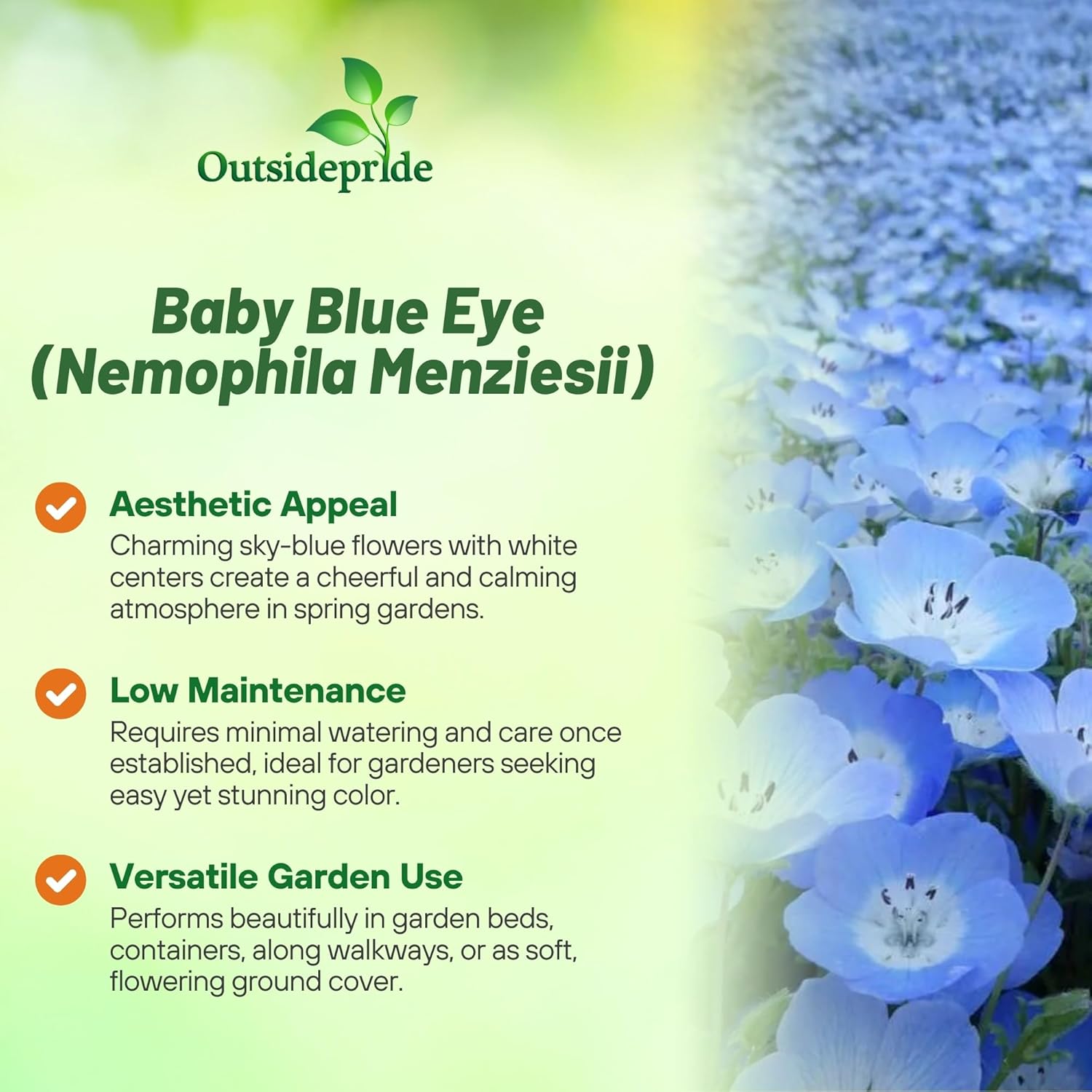
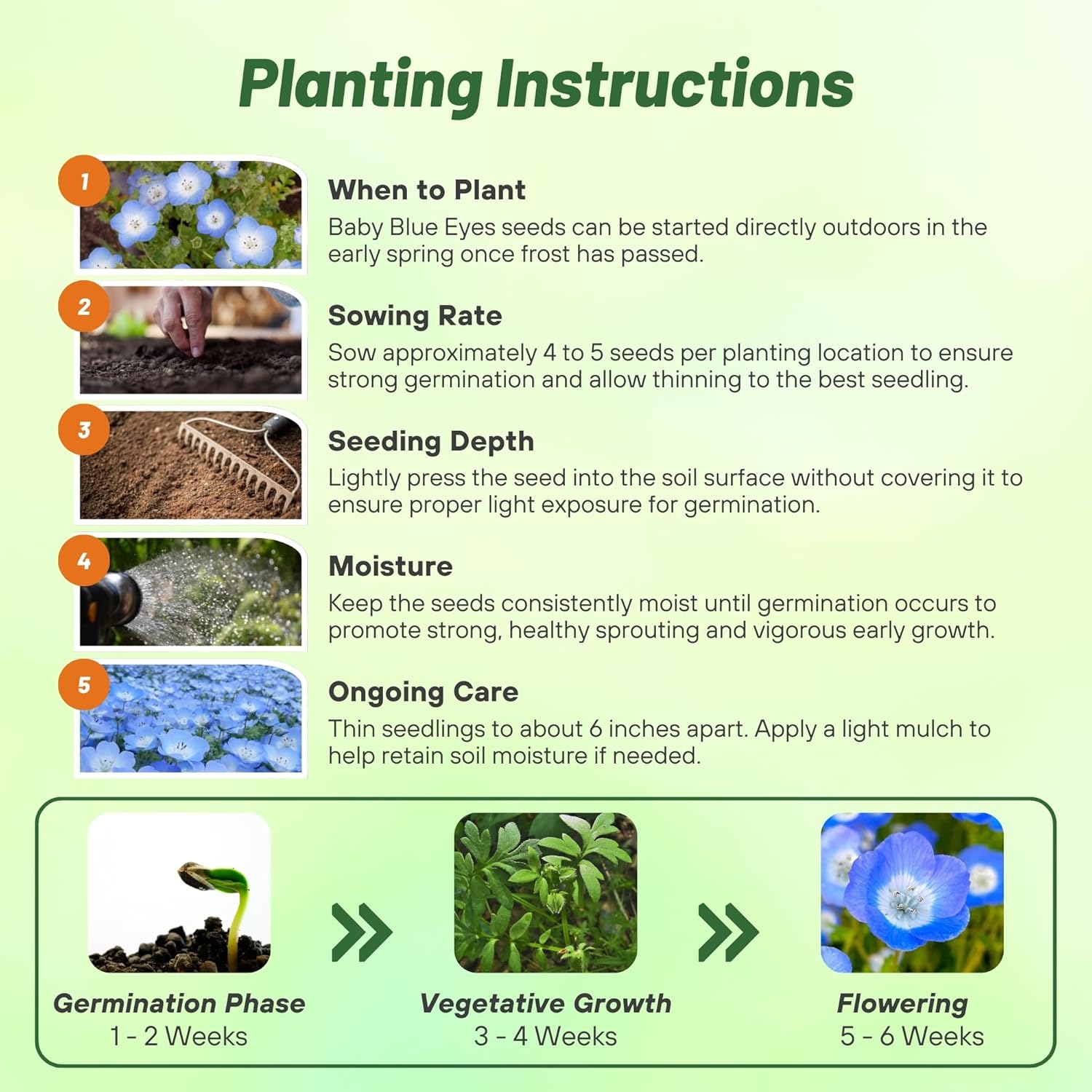



Baby Blue Eyes Seeds
About...
Baby Blue Eyes (Nemophila Menziesii) - Grown quickly from Baby Blue Eyes seed, this annual flower is commonly found along the west coast of the United States. Baby Blue Eyes grows quickly from flower seeds and often is seen in the spring.MORE NEMOPHILA OPTIONS
Planting Directions
TEMPERATURE
68F
AVERAGE GERM TIME
7 - 21 days
LIGHT REQUIRED
Yes
DEPTH
1/8th inch
SOWING RATE
4 - 5 seeds per plant
MOISTURE
Keep seeds moist until germination
PLANT SPACING
6 inches

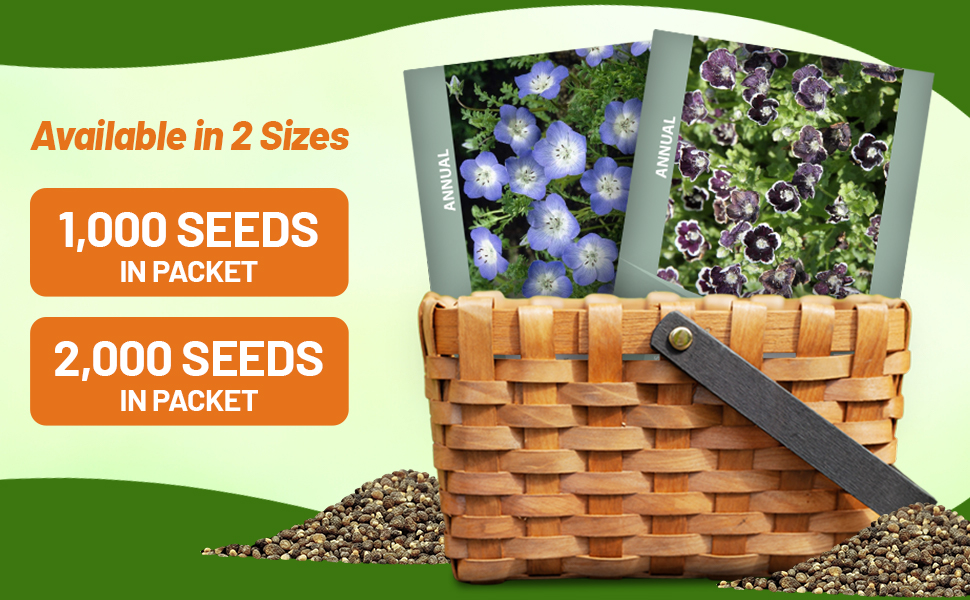
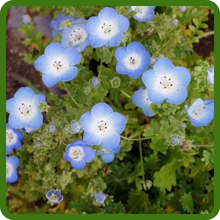




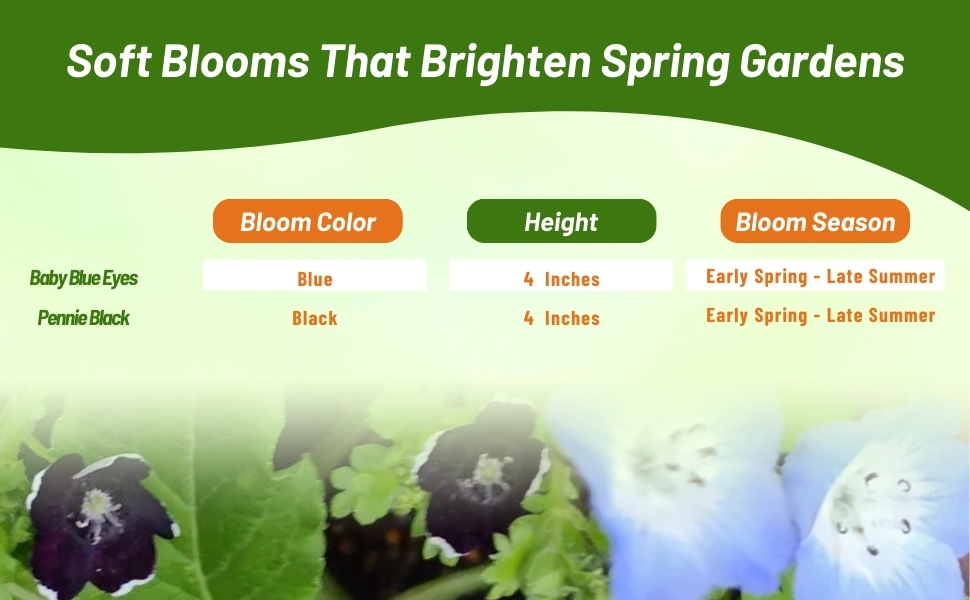

Baby Blue Eyes (Nemophila Menziesii) - Grown quickly from Baby Blue Eyes seed, this annual flower is commonly found along the west coast of the United States. Baby Blue Eyes grows quickly from flower seeds and often is seen in the spring. It can be planted as an annual flower in USDA zones 3 - 9. Baby Blue Eyes Nemophila has simple flowers of true blue with white centers, and it is a profuse bloomer. It prefers full sun to partial shade and moist but well-draining soil. It does not tolerate humidity well. The Baby Blue Eyes plant is known to re-seed itself for a display the following spring.
Nemophila Menziesii seeds can be started directly outdoors in the early spring. Prepare a seedbed with loosened soil that is weed free. The Baby Blue Eyes seed can be covered 1/8 of an inch with light soil. Keep the flower seeds moist until germination occurs. An application of water-soluble, all-purpose plant food before blooming is beneficial.
Common Questions
Does nemophila make a good cut flower?
Although it makes a pretty cut flower, nemophila flowers do not last very long in water.
Can I start nemophila inside?
Although they are easy to direct sow, and they do not like to be transplanted, they can be started inside six to eight weeks inside. Transplant carefully.
Why did my nemophila die out in the middle of the summer?
Nemophila cannot tolerate high summer heat and will often die out in the summer.
Should I deadhead my nemophila?
Yes, deadheading prolongs the blooming time and prevents excess self-sowing.
What pollinators will nemophila attract?
Nemophila will attract bees and butterflies to the garden.
Planting Directions
TEMPERATURE
55 - 65F
AVERAGE GERM TIME
7 - 30 days
LIGHT REQUIRED
Yes
DEPTH
1/8 inch
SOWING RATE
13 ounces per 1,000 square feet or 35 pounds per acre
MOISTURE
Keep seeds moist until germination
PLANT SPACING
6 - 12 inches



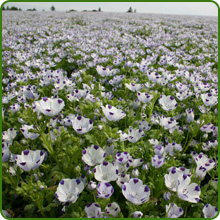





Five Spot (Nemophila Maculata) - Create a lovely carpet of delicate blooms from wildflower seed! Five Spot Nemophila Maculata is a annual wild flower that easily and quickly grows from wild flower seeds. It is a hardy annual that grows very, very fast and blooms profusely, and it dies back with the first frost of fall. Although an annual, Five Spot may re-seed if the seeds fall on bare ground. The 1 inch, 5-petaled flowers are very attractive, white with vivid purple spots at the tip of each petal. The foliage is very attractive too. Five Spot wildflower is a prolific bloomer all spring, with a low spreading habit. It prefers full sun to dappled shade in various soil conditions. A great item for hanging baskets. This wild flower species will tolerate a variety of conditions, and doesn't seem to care whether soil is heavy or sandy. However, it prefers cool weather, so if yours is very hot, try to plant your wildflower seed where it will receive some shade.
Sow Five Spot seeds directly outdoors in prepared soil in the spring when temperatures are warming. Lightly rake soil over the top of the wildflower seed. Keep Nemophila Maculata seeds moist until germination.
Common Questions
Does nemophila make a good cut flower?
Although it makes a pretty cut flower, nemophila flowers do not last very long in water.
Can I start nemophila inside?
Although they are easy to direct sow, and they do not like to be transplanted, they can be started inside six to eight weeks inside. Transplant carefully.
Why did my nemophila die out in the middle of the summer?
Nemophila cannot tolerate high summer heat and will often die out in the summer.
Should I deadhead my nemophila?
Yes, deadheading prolongs the blooming time and prevents excess self-sowing.
What pollinators will nemophila attract?
Nemophila will attract bees and butterflies to the garden.
Planting Directions
TEMPERATURE
68F
AVERAGE GERM TIME
7 - 21 days
LIGHT REQUIRED
Yes
DEPTH
1/8th inch deep
SOWING RATE
4 - 5 seeds per plant
MOISTURE
Keep seeds moist until germination
PLANT SPACING
6 inches

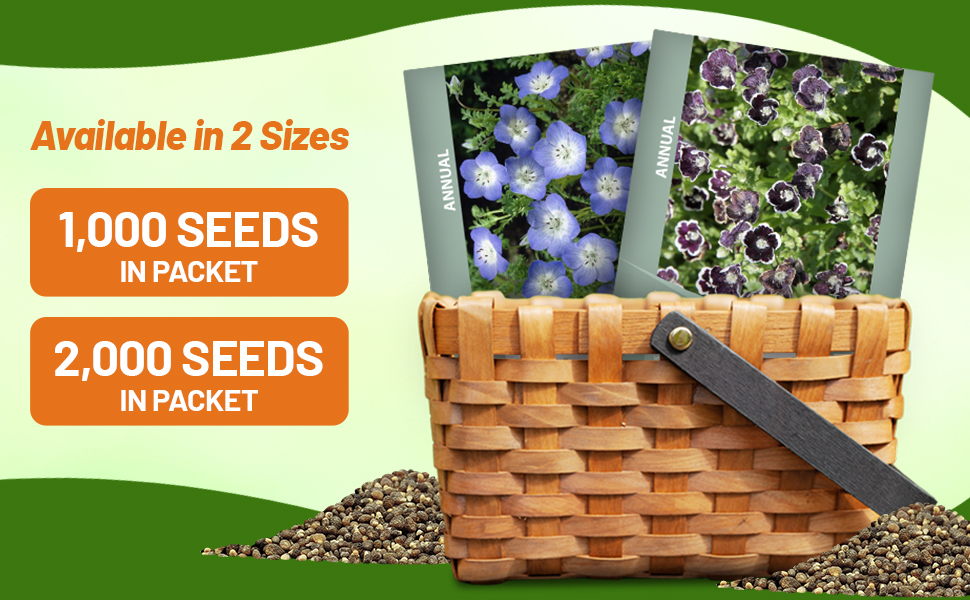
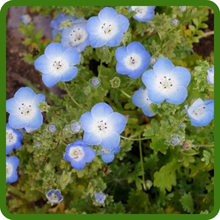

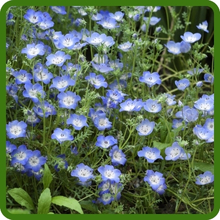
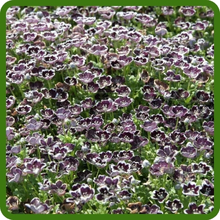


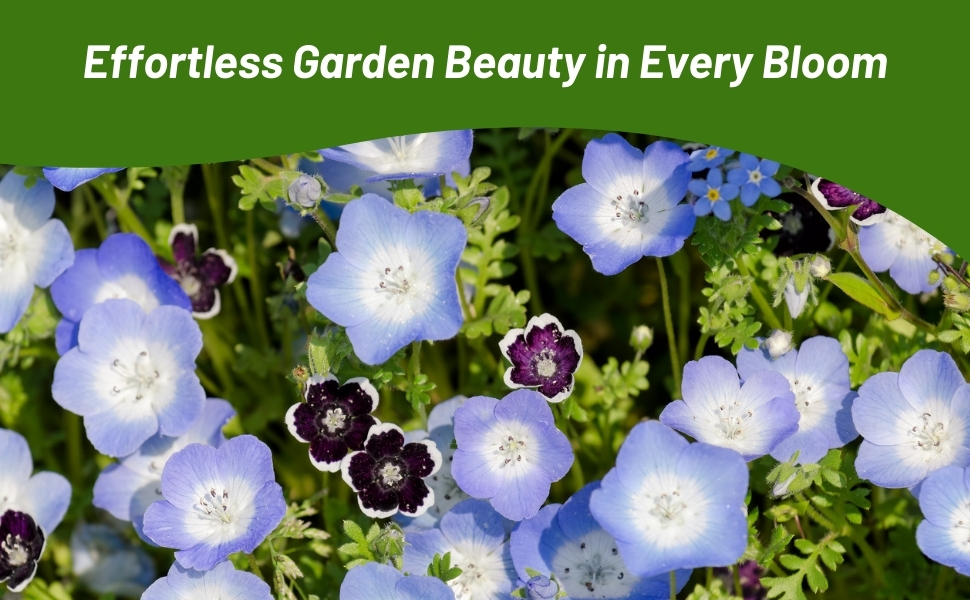
Pennie Black (Nemophila Discoidalis) - Start Pennie Black seeds for this lovely low-growing annual that has a trailing habit. Nemophila Pennie Black, also known as Nemophila Baby Black Eyes, is a superb, easy to grow annual with masses of small, 1 inch deep violet to black flowers that are edged with white. The Victorians loved this tiny two-toned flower with light, airy foliage. The Nemophila Penny Black plant only reaches 4 inches in height and is slightly trailing, so it is perfect for containers, baskets, and window boxes, or use it as an edging for borders or a ground cover plant.
Nemophila Penny Black seeds can be sown directly outdoors in a prepared seedbed. Lightly cover the flower seed with soil and keep moist. Nemophila seeds can be started indoors in the late winter for transplanting outside once frost season is over. In milder climates, Nemophila Penny Black will reseed itself for the following season. Nemophila care includes deadheading the spent flowers to promote continual flowers and following a regular watering schedule to keep the plant from drying out.
Common Questions
Does nemophila make a good cut flower?
Although it makes a pretty cut flower, nemophila flowers do not last very long in water.
Can I start nemophila inside?
Although they are easy to direct sow, and they do not like to be transplanted, they can be started inside six to eight weeks inside. Transplant carefully.
Why did my nemophila die out in the middle of the summer?
Nemophila cannot tolerate high summer heat and will often die out in the summer.
Should I deadhead my nemophila?
Yes, deadheading prolongs the blooming time and prevents excess self-sowing.
What pollinators will nemophila attract?
Nemophila will attract bees and butterflies to the garden.
































